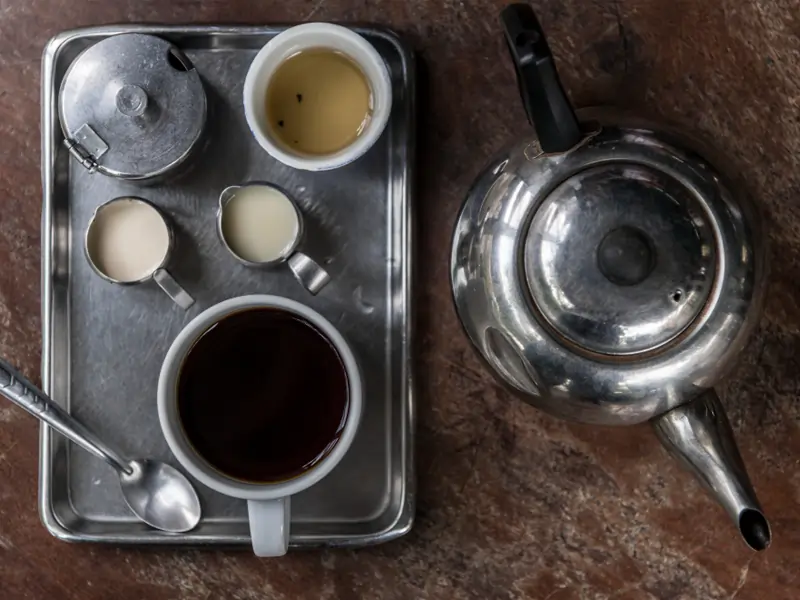
In the early hours of a misty Kolkata morning or during the golden lull of late afternoon, there’s one aroma that gently weaves its way through every bylane, market corner, college gate, and office para — the scent of freshly brewed tea. For Kolkata, tea is not just a beverage. It’s an emotion. A ritual. And at the heart of it lies one of the city’s most endearing and enduring traditions — the tea shop “adda” culture.
But how did this culture originate? Why does it still thrive in a city where trends come and go? And how is it evolving with a new generation of chai-lovers?
Let’s stir the cup and find out.
Kolkata’s tea culture dates back to the British colonial era, when tea was introduced not just as a commodity but as a lifestyle. While the British sipped on their Earl Grey in drawing rooms and clubs, the common man in Bengal adopted the drink in his own unique way — through roadside tea stalls and para cha er dokan (local tea shops).
By the late 19th and early 20th century, these stalls had become neighbourhood fixtures, serving piping hot tea in earthen cups or glass cups. But they didn’t just serve tea — they served conversation. Heated debates on politics, football, literature, cinema, or simply the worries of daily life — everything found a stage at these humble stalls.
In time, this evolved into what is now an iconic Bengali cultural practice: "Adda" — the informal, often passionate exchange of ideas and banter, typically over endless rounds of tea.
From the tea stall outside Presidency College to the one at the corner of College Street, or the legendary Indian Coffee House, every cup carried stories and ideas that shaped minds — and sometimes even movements.
This culture became so deeply ingrained in Kolkata's identity that it’s difficult to imagine the city without its tea and adda traditions.
As Kolkata modernizes, so too does its tea culture — but it never loses its soul. The city is now home to a new wave of tea cafés, where tradition meets trend:
What remains constant, however, is the essence: conversation, connection, and community. Whether it's over a ₹10 roadside bhaar or a ₹200 Darjeeling white tea in an air-conditioned café, Kolkata still talks, debates, laughs, and dreams over tea.
Today, “adda” is no longer confined to college gates or roadside stalls. It now thrives in cozy co-working cafés, rooftop lounges, and even online spaces. But the spirit is unchanged — a safe, warm space for free-flowing thought, friendship, and laughter.
Interestingly, the younger generation is rediscovering the charm of the old-school tea stall too. In fact, it’s not uncommon to see college students ditch high-end coffee shops to return to their local tea guy, because “cha r sathe addar ja maja, ta Starbuckse nei” (the fun of having tea with adda can’t be found in Starbucks).
Kolkata’s love affair with tea isn’t just about the drink — it’s about what the drink represents. It's about belonging, about being heard, about slowing down in a world that moves too fast. From revolutionaries to romantics, from philosophers to poets, every Kolkatan has a tea shop story.
So the next time you pass by a modest tea stall, stop for a minute. Sip slowly. Listen carefully. You’ll hear the heartbeat of the city — steeped in nostalgia, brewed with warmth, and served with soul.
